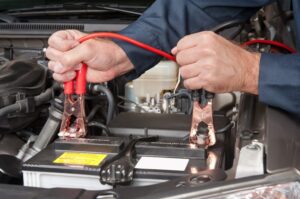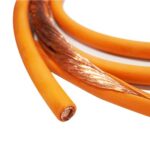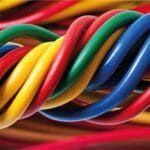A dead car battery can leave you stranded—but with a pair of jumper cables and a second vehicle, you can get back on the road in minutes. Whether you're facing a cold morning or an old battery, here's a simple, safe guide on how to use jumper cables properly.

How to Use Jumper Cables
🧰 What You’ll Need
Jumper cables (at least 10–12 feet, heavy-duty preferred)
A second vehicle with a fully charged battery
A flat, safe place to park both vehicles
Optional: gloves and eye protection
⚠️ Safety First: Important Warnings
Make sure both vehicles are turned off
Keep metal objects away from battery terminals
Never touch the cable clamps together when they are connected to a battery
Read your car's manual — some vehicles have specific jump-starting procedures
🚗 Step-by-Step: How to Use Jumper Cables
Step 1: Position the Vehicles
Park the working vehicle nose-to-nose (or side-by-side) with the dead car so the jumper cables can reach.
Turn off both engines, and put both cars in Park (P) or Neutral (N) with the parking brakes on.
Step 2: Identify Battery Terminals
Open the hoods and find the batteries.
Each battery has:
Positive terminal (+) — often red
Negative terminal (−) — often black
Step 3: Connect the Jumper Cables (Order Matters!)
Red clamp to dead battery (+)
Red clamp to good battery (+)
Black clamp to good battery (−)
Black clamp to an unpainted metal surface on the dead car (like a bolt on the engine block — not the battery)
✅ This reduces the risk of sparks and battery explosion.
Step 4: Start the Working Car
Let the working car run for 1–2 minutes to send power to the dead battery.
Step 5: Start the Dead Car
Try starting the car with the dead battery. If it doesn’t start, wait another minute and try again.
Step 6: Remove the Cables (Reverse Order)
Black clamp from engine block
Black clamp from good battery (−)
Red clamp from good battery (+)
Red clamp from dead battery (+)
⚠️ Do not let the clamps touch each other during removal.
Step 7: Let the Jumped Car Run
Let the revived car idle for 15–30 minutes or drive it for a while to recharge the battery.
🛠️ Troubleshooting: If It Still Won’t Start
Check if the cable clamps are secure and connected to clean metal
Make sure you’re following the connection order
If it still doesn’t work, your battery might be too far gone, or there may be another issue (like a faulty alternator)
💡 Pro Tips
Invest in heavy-gauge jumper cables (4 to 6 gauge for better power transfer)
Keep cables stored in a pouch in your trunk
Consider a portable jump starter for emergencies when no other vehicle is nearby
❓ FAQ
Q: Can jumper cables damage my car?
A: Not if used correctly. Improper connection or reversed polarity can cause electrical damage.
Q: Can I jump-start a car in the rain?
A: Yes, if you avoid touching metal and follow the steps carefully.
Q: Do hybrid or electric vehicles need special care?
A: Yes — always refer to the vehicle’s manual. Many EVs can't be jump-started in the traditional way.
✅ Summary Checklist
✅ Park safely
✅ Turn off both vehicles
✅ Connect cables in the correct order
✅ Start the working car, then the dead car
✅ Remove cables in reverse order
✅ Let the car run to recharge






1 comment
OKX 08/19/2025
Hello, its good paragraph regarding media print, we all be aware of media is a great source of data.